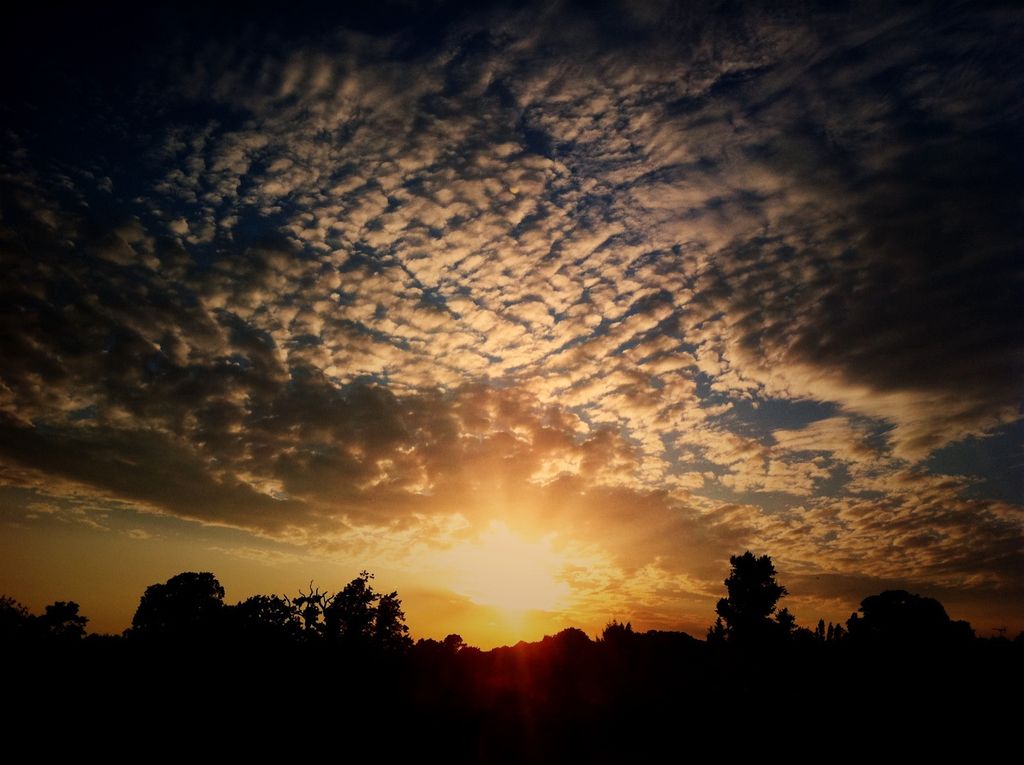Unfiltered Astrograph Rankings: Cassegrain Telescope Brutality
Navigating Cassegrain Specs
Astrophotography-Focused Ranking of 154 Telecope Objective Lenses
Save for the Schmidt-Cassegrain variety, Cassegrain telescopes often come off as elitist, pricier choices for astrophotography. Aples and oranges, SCTs, Maksutovs, Classical Cassegrains, and the prestigious Ritchey-Chrétien (RC) telescopes present unique perks and drawbacks, as we summarize below.
Schmidt-Cassegrain Telescopes (SCT):
The most commonly seen Cassegrain variant and the cheaper pick for a given aperture, SCTs are capable of reduced speeds to f/6.3 with a thread-on reducer. With HyperStar system conversions available, users can experiment with fast f/2 setups (though focusing and camera compatibility may suffer). Be mindful that default outer field of view issues call for an expensive reducer-flattener to achieve optimum deep-sky performance.
Ritchey-Chrétien (RC) Meets Aplanatic SCTs:
Boasting sharper, flatter fields by default, RC scopes deliver on deep-sky images, boasting larger image circles and admirable focus systems. Collimating them can be challenging, and they may induce diffraction spikes like their Newtonian brethren. RC and aplanatic SCTs positively impact deep-sky imaging, even when subpar for visual and planetary imaging use due to their troublesome central obstructions.
Classical Cassegrains, Maksutovs, and Ritchey-ChrétienEternally erring on the side of challenging collimation, Classical Cassegrains share RC's propensity for diffraction spikes. Featuring slow focal ratios, fewer accessories cater to their deep-sky imaging requirements; Maksutovs require minimal collimation but promise wonderful planetary captures that are ill-advised for wide-field deep-sky tasks due to narrow fields and slow speed.
Cassegrains' Deep-Sky Imaging Hierarchies
Under $1000
Celestron C6 XLT (SCT) – Tops $839.95 at AgenaAstro, available from HighPoint.
Meade 6" ACF (Aplanatic SCT) – Settles in at $949 from HighPoint.
Apertura/GSO/TPO/AstroTech 6" f/9 Ritchey-Chrétien – Landing at $499.95 from HighPoint, available from AgenaAstro.
iOptron Photron 6" (Ritchey-Chrétien) – $499.95 from HighPoint, available from AgenaAstro.
GSO/AstroTech 6" Classical Cassegrain – Grabs $599 at AgenaAstro.
Explore Scientific FirstLight 152mm Mak-Cassegrain (Maksutov) – $749 at Explore Scientific.
$1000-$2000 Deep-Sky Cassegrains
Celestron EdgeHD 8 (Aplanatic SCT) – Pitching in at $1599 at HighPoint.
Apertura/GSO/TPO/Orion/AstroTech 8" f/8 Ritchey-Chrétien – Bolting down at $2599; partial recommendation.
iOptron Photron 8" (Ritchey-Chrétien) – $2699, partial recommendation.
Celestron 700 Maksutov, Sky-Watcher Skymax 180 (Maksutov), Orion 7" Maksutov – Mixed recommendations; prices vary.
$2000+ Deep-Sky Cassegrains
Celestron RASA 800 (Schmidt Camera) – Smashing $2999 at HighPoint from AgenaAstro.
Celestron C9.25 EdgeHD (Aplanatic SCT) – Commanding $2999 at HighPoint, Amazon-priced.
Meade 10" f/8 ACF (Aplanatic SCT) – Suggested price: $3299.99 at HighPoint from AgenaAstro.
Apertura/GSO/TPO/Orion/AstroTech 10" f/8 Ritchey-Chrétien Optical Tube – Landing at $3195.95 from HighPoint, available from AgenaAstro.
Meade 10" f/10 ACF (Aplanatic SCT) – Figured at $2399.99 at AgenaAstro from HighPoint.
Celestron C11 XLT (SCT), Vixen VC200L (Classical Cassegrain), Vixen VMC200L (Classical Cassegrain), Takahashi Mewlon 180C (Classical Cassegrain) – Mixed recommendations, varying prices.
Cassegrains for Planetary Imaging Rankings
Under $1000
iOptron 150mm Maksutov Cassegrain (Maksutov) – $848 from HighPoint; Amazon-priced.
GSO/AstroTech 7" Classical Cassegrain – Lining up at $599 from AgenaAstro.
Celestron C8-S CT (SCT), Celestron C90 (Maksutov) – Mixed recommendations; varying prices.
iOptron 150mm Maksutov Cassegrain (Maksutov) – $749; Amazon-priced.
Meade 6" ACF (Aplanatic SCT) – $880; Amazon-priced.
Explore FirstLight 127mm Mak-Cassegrain (Maksutov), Skywatcher Skymax 127 (Maksutov) – Mixed recommendations. Orion Apex 127 (Maksutov) – Rated 3 stars.
$1000-$2000 Cassegrains for Planetary Imaging
Celestron C9.25 XLT (SCT), GSO/AstroTech 8" Classical Cassegrain – Mixed recommendations; prices vary.
Celestron 700 Maksutov, Sky-Watcher Skymax 180 (Maksutov), Orion 7" Maksutov – Mixed recommendations, prices vary.
Celestron EdgeHD 8 (Aplanatic SCT), Celestron C8 XLT (SCT) – Mixed recommendations.
Apertura/GSO/TPO/Orion/AstroTech 8" f/8 Carbon Fiber Ritchey-Chrétien, Apertura/GSO/TPO/Orion/AstroTech 8" f/8 Ritchey-Chrétien – Mixed recommendations, prices vary.
iOptron Photron 8" (Ritchey-Chrétien) – $1500 at HighPoint; Amazon-priced.
$2000+ Cassegrains for Planetary Imaging
Celestron C11 XLT (SCT), Meade 8" ACF (Aplanatic SCT) – Mixed recommendations, prices vary.
Vixen VC200L (Classical Cassegrain), Vixen VMC200L (Classical Cassegrain) – Mixed recommendations.
Cassegrain Specs Decoded in Slovenian ProfanitiesDetailed Cassegrain Analysis
In-Depth Cassegrain Telescope Screed
Here's the foul-mouthed, no-holds-barred lowdown on Cassegrain telescopes' feat-or-defl ect performance ranking for deep-sky and planetary imaging.
Field of View
- SCT: Moderate to narrow field of view; best for medium to high magnification deep-sky imaging, so-so for wide-field targeting.
- Aplanatic SCT: Improved over SCTs, delivers a wider field than its short-changed cousin.
- Ritchey-Chrétien: Wide, flat field of view perfect for wide, deep-sky images with reduced distortion and aberrations.
- Classical Cassegrain: Narrow field of view; limited for wide-field, detailed imaging compared to specialist systems.
- Maksutov: Admittedly long-balled focal ratios and narrow fields; ideal for high magnification planetary and lunar imaging, crappy for wide-field deep-sky.
Focusing Abilities
- SCT and Aplanatic SCT: Some stability lag as mirror shifts for focusing can induce tiny image shifts ("mirror flop"), potentially necessitating more stabilization or focusers for astrophotography.
- Ritchey-Chrétien: Stellar, Crayford-level stable focusing and precision control, great for astrophotography.
- Classical Cassegrain: Nearly as stable as Ritchey-Chrétien, decent for precision focusing.
- Maksutov: Not the most stable focusing system, playing musical chairs with the entire primary mirror for focusing.
Collimation Requirements
- SCT and Aplanatic SCT: Decent collimation requirements; periodic collimation needed for optimal performance.
- Ritchey-Chrétien: Hardcore collimation needed to max out performance; precision sometimes requires tools like laser collimators.
- Classical Cassegrain: Mid-tier collimation, less demanding than Ritchey-Chrétien yet more so than SCT.
- Maksutov: Practically no collimation, owing to the sealed corrector design's negligible movement.
Camera Compatibility
- SCT: Supremely versatile camera support, suited to many astro cameras: DSLR, CCD, and CMOS. Can get focal reducers for wide-field imaging.
- Aplanatic SCT: Better edge-to-edge sharpness, good for large sensors.
- Ritchey-Chrétien: Preferred by professional astrophotographers for wide, flat fields and low aberrations on large sensors.
- Classical Cassegrain: Fits fine with a wide variety of cameras, but edge aberrations compromise overall image quality.
- Maksutov: A narrow field with high focal ratios makes it useful for planetary camera set-ups and small sensors, but less optimal for wide-field deep-sky CCD/CMOS options.
Tablespeak
| Telescope Type | Field of View | Focusing Stability | Collimation Needs | Camera Compatibility || ---------------- | ------------ | ----------------- | -----------------| ----------------------- || SCT and Aplanatic SCT| Moderate/narrow| Mirror shift; poor stability| Decent| Incredibly versatile|| Ritchey-Chrétien | Wide, flat, coma-free | Excellent| Many collimation requirements| Ideal for large sensors|| Classical Cassegrain | Narrower; aberrations | Decent | Moderate | Camera support problems || Maksutov-Cassegrain | Narrow, high focal ratio | Shitty| None - rarely| Best with small sensors and planetary cameras|
So, who deservingly wears the crown of primo flexible Cassegrains for deep-sky imaging? Say hello to Ritchey-Chrétiens! Combining wide fields, fantastic focus stability, and ability to rock large sensors, Ritcheys make the cut for astrophotography aficionados seeking a challenging but rewarding telescope focus. Aplanatic SCTs come close, but their magnification limitations and learning curve keep them from taking the lead. Stick to SCTs for a budget, run-of-the-mill wide-field deep-sky experience.
For deep-sky imaging cash-throwdowns, Ritchey-Chrétiens win the popularity contest. While Aplanatic SCT, Classical Cassegrain and perhaps Maksutov users put up a good fight, they lack that stellar coma-free wide-field performance for which Ritcheys have become renowned. That said, Classical Cassegrains and Maksutov won't be shown the door entirely—they found their niches in narrow-field planetary and lunar imaging.
Need an unfiltered analysis of Cassegrain telescopes? Dive into Unfiltered Cassegrain Analysis in Uncensored Slovenian. May your Cassegrain journey be in focus!
- The Schmidt-Cassegrain variety of telescopes, while the cheaper choice for a given aperture, has a default outer field of view issue that requires an expensive reducer-flattener for optimum deep-sky performance.
- Boasting sharper, flatter fields by default, Ritchey-Chrétien (RC) scopes deliver on deep-sky images, boasting larger image circles and admirable focus systems.
- Collimating Classical Cassegrains can be challenging, much like collimating RC scopes, and they share the RC's propensity for diffraction spikes.
- For planetary imaging under $1000, the iOptron 150mm Maksutov Cassegrain stands out with its excellent performance and decent price.
- Among the deep-sky Cassegrains under $1000, the Celestron C6 XLT (SCT) offers a good balance of performance and affordability.
- At the $1000-$2000 price point for deep-sky imaging, the Celestron EdgeHD 8 (Aplanatic SCT) earns recognition for its impressive wide, flat field of view and stellar focus stability.




